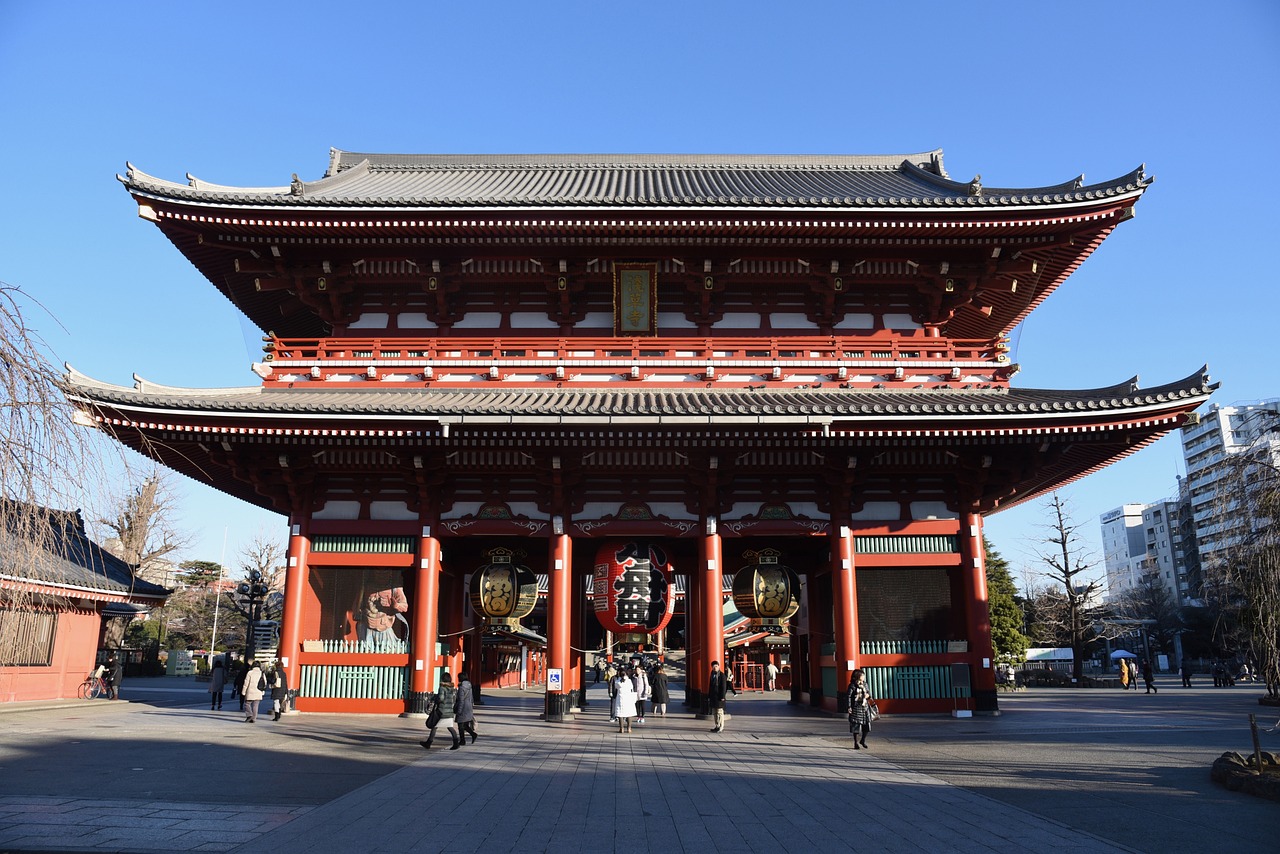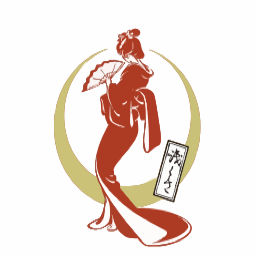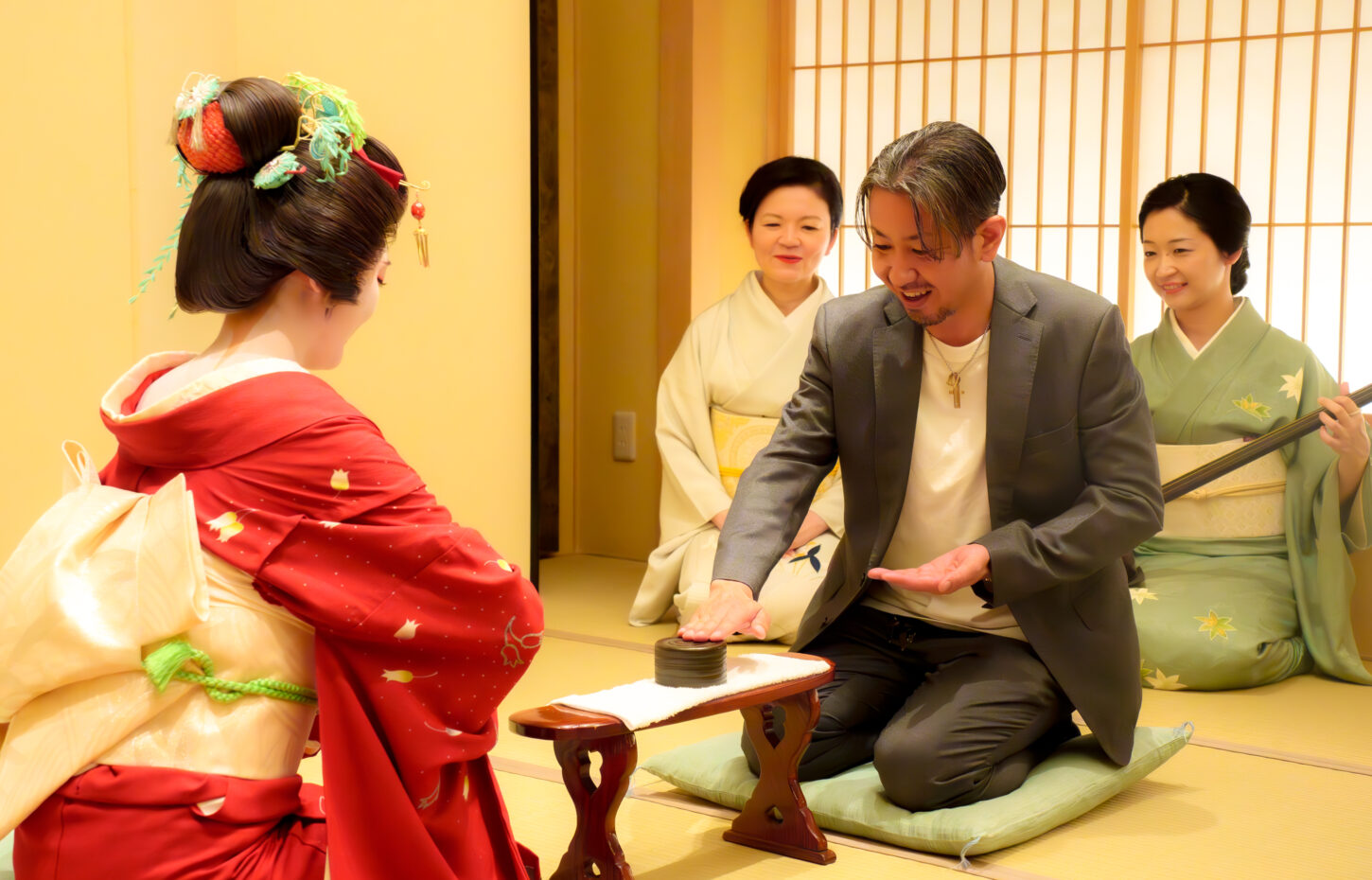
Existing Geisha Districts in Tokyo! How to Enjoy These Elegant Neighborhoods Once

In Tokyo, the sophisticated geisha culture that has continued since the Edo period still thrives today. In this article, we will introduce the six existing geisha districts in Tokyo, including Asakusa, along with their history and features. We will also answer questions such as whether “one-time visitors are not allowed” and how to meet geisha and half-玉 (hango). By reading this, you’ll understand the current state of these traditionally high-threshold districts and discover stylish ways to enjoy these neighborhoods.
1. What Are Geisha Districts in Tokyo? The Charm of a Sophisticated Culture That Continues from Edo
Tokyo’s geisha districts (kagai/hanamachi) are neighborhoods where teahouses and okiya (geisha houses) gather, and where geisha entertain guests in the ochaya (teahouse) setting. Their history dates back to the Edo period, and they are special places that breathe the refined traditions that have walked hand in hand with Japan’s political, economic, and cultural development. These districts, with their sophisticated hospitality and polished arts, continue to captivate people even in modern Tokyo.
1.1 Elements and Roles of Geisha Districts
Geisha districts are primarily composed of three elements: “teahouses (ryotei),” “okiya,” and “kenban (office).” These elements work together to provide the best hospitality to guests, supporting the tradition of the districts.
| Element | Role |
|---|---|
| Teahouse (ryotei) | A place where guests enjoy meals, performances, and ochaya entertainment. They call in geisha and hold banquets. |
| Okiya | A place where geisha belong; geisha learn their craft here. |
| Kenban | An important entity that manages geisha schedules and provides training venues, supporting the overall operation of the district. |
1.2 The History of Geisha Districts Passed Down from Edo to Tokyo
During the Edo period, a culture emerged among samurai and wealthy townspeople of calling geisha to restaurants for banquets, which became the prototype of geisha districts. From the Meiji era onward, they also became social venues where influential figures from politics and business gathered, secretly supporting Japan’s modernization. Even as the cityscape changed over time, the spirit of hospitality and traditional arts have been handed down from master to apprentice. You can learn more about this deep history and culture on the official site of Tokyo Geisha World.
1.3 The Main Attractions of Ochaya: Geisha and Han-gyoku
The main characters in geisha districts are the “geisha (geisha)” or “geigi (geisha women),” who add color to banquets through singing, dancing, shamisen, and other arts. Before becoming geisha, young girls are called “han-gyoku” (apprentice geisha) in Tokyo. Geisha are the embodiment of traditional culture, cultivated through years of rigorous training, and serve guests with their refined arts and manners. Their elegant comportment and skillful conversation are also essential elements that enliven the ochaya.
2. [2024 Latest] List of Existing Geisha Districts in Tokyo
Tokyo’s geisha districts, which continue the traditional culture of Japan since the Edo period, have evolved over time. Currently, there are six districts in Tokyo that preserve tradition, collectively called “Tokyo Rokka-gai” (Six Geisha Districts in Tokyo). Each has its own history and atmosphere, still enchanting many visitors today.
Below is a list of the six existing districts in Tokyo that visitors should experience at least once.
| Name of District | Main Location | Features |
|---|---|---|
| Shimbashi (しんばし) | Ginza and Shimbashi, Chuo Ward | Famous for “Onzori.” Adjacent to Ginza, it is a district with a high-class atmosphere. |
| Akasaka (あかさか) | Akasaka, Minato Ward | Many upscale teahouses, developed as a social scene for politics and business. |
| Kagurazaka (かぐらざか) | Kagurazaka, Shinjuku Ward | A charming neighborhood with nostalgic stone-paved alleys and traditional atmosphere. |
| Yoshicho (よしちょう) | Nihonbashi Ningyocho, Chuo Ward | Once flourished as the center of Edo, nurturing a refined “iki” culture. |
| Asakusa (あさくさ) | Asakusa, Taito Ward | Vibrant as an international tourist destination, one of the easiest districts to experience the atmosphere of a geisha district. Centered around Asakusa Kenban. |
| Mukojima (むこうじま) | Sumida Ward, Mukojima | Currently known as the district with the largest number of geisha in Tokyo. |
Each of these districts has its own association, working to nurture geisha and han-gyoku, and to preserve traditional arts. Detailed information can be found on the websites of each association or related organizations. For example, the activities of Asakusa Geisha District are detailed on the official site of Asakusa Kenban.
3. The Top 6 Geisha Districts in Tokyo: Features and How to Enjoy Each
Tokyo’s geisha districts, which carry on the Edo elegance, are called “Rokka-gai” (Six Districts), each with its own unique history and culture. Here, we introduce the魅力 and ways to enjoy these six representative districts of Tokyo.
3.1 Shimbashi Geisha District: A First-Class Neighborhood Adjacent to Ginza
〇 History and Features of Shimbashi Geisha District
Shimbashi Geisha District was established during the Meiji era and is a first-class district loved by many business and cultural elites due to its proximity to Ginza. Despite its modern cityscape, it still boasts high-class teahouses and continues the tradition of refined hospitality. “Onzori” is a stage where Geisha from Shimbashi showcase their skills, attracting many visitors every year.
3.2 Akasaka Geisha District: An Elegant Neighborhood Supporting Politics and Economics
〇 History and Features of Akasaka Geisha District
Akasaka Geisha District is known as a prestigious district that has been a stage for Japan’s politics and economy. Surrounded by the National Diet Building and luxury hotels, it has long been a meeting place for prominent politicians and businesspeople. The geisha of Akasaka are known for their high education and refined arts, adding elegance to important hospitality occasions.
3.3 Kagurazaka Geisha District: A Town with Nostalgic Stone-Paved Alleys
〇 History and Features of Kagurazaka Geisha District
Kagurazaka developed as a geisha district because it was close to Edo Castle’s outer moat and had many samurai residences. The stone-paved alleys and black fences still retain the Edo atmosphere, captivating visitors. Known as “Yamanote no Hanamachi,” it nurtures a calm, stylish culture in a relaxed environment.
3.4 Yoshicho Geisha District (Ningyocho): An Elegant Town Born in Edo’s Heart
〇 History and Features of Yoshicho Geisha District
Yoshicho (Yoshicho) Geisha District, located around Nihonbashi Ningyocho, has a history dating back to the Edo period. Reflecting the stylish and spirited atmosphere of Nihonbashi, it is a lively district that developed as the center of Edo. It was also near the Ichimura-za theater, which contributed to its development alongside theater culture.
3.5 Asakusa Geisha District: A Bustling Downtown Area and Tourist Spot
〇 History and Features of Asakusa Geisha District
Asakusa Geisha District is located behind Senso-ji Temple and has been a center of entertainment for common people since the Edo period, developing within its lively atmosphere. Asakusa is a popular tourist destination, and the traditional charm of the geisha district still remains lively. During the Sanja Matsuri, geisha and han-gyoku perform traditional dances and add color to the festival.
Latest information on Asakusa Geisha District can be found on the official website of Asakusa Kenban.
3.6 Mukojima Geisha District: The Town with the Largest Number of Geisha
〇 History and Features of Mukojima Geisha District
Located on the east bank of the Sumida River, Mukojima has been known since the Edo period as a scenic leisure area with a concentration of teahouses. It is now known as the district with the most geisha in Tokyo. Despite being near the Tokyo Skytree, traditional teahouses still line the streets, offering a calm environment to experience cultural traditions.
4. Beginner-Friendly Q&A for Enjoying Tokyo’s Geisha Districts
When hearing “geisha districts” or “ochaya entertainment,” some may feel it’s a bit intimidating. However, behind those doors lies the sophisticated traditional culture of Japan that has continued since the Edo period. Here, we answer common questions from first-time visitors and introduce basic knowledge to enjoy these districts with confidence.
4.1 Is the “One-Time Visitors Not Allowed” True? The Basics of Ochaya Entertainment
Most teahouses in geisha districts still follow the tradition of “no first-time visitors,” which is a unique custom that emphasizes trust between the customer, the establishment, and the geisha. This is based on the idea of trusting the character of the guest through introductions, as payment is often made later, and the atmosphere of the moment is valued.
However, times are changing, and more teahouses now accept guests without introductions and offer plans for first-timers.
Asakusa Miyakodori offers plans that are safe even for first-time visitors.
At ochaya, you can enjoy delicious food and drinks while conversing with geisha, or watch performances of shamisen, singing, and beautiful dance. Playing traditional ochaya games like “Tora Tora” or “Kompira Fune Fune” with geisha is also a delightful experience. Please enjoy this as a place to experience Japan’s traditional hospitality without formality.
4.2 How to Play with Geisha?
If you want to invite geisha to an ochaya, how should you proceed? Here, we explain the basic process and costs.
4.2.1 Reservation Process
To invite geisha, the general method is to contact the teahouse first. You tell them the desired date and time, number of guests, and approximate budget, and discuss the invitation. The teahouse then contacts the “kenban” (geisha office) that coordinates geisha, and proceeds with arrangements. You may also be able to specify preferences for which geisha to invite, if available.
4.3 Try Easy Events and Lunch Experiences First
For those who feel a bit hesitant about nighttime ochaya, there are more casual ways to experience the atmosphere of a geisha district.
For example, some teahouses in Asakusa Geisha District offer opportunities to enjoy arts during daytime hours more casually. These are shorter than evening visits and are perfect as an introduction to geisha culture.
Additionally, the annual “Dance Event” is a great opportunity to see the results of geisha and han-gyoku’s training all at once. The Asakusa Odori is famous, and tickets are available to anyone interested. Such events are often announced on the websites of each district’s association, so be sure to check them out.
More detailed information can be found on the official site of the Asakusa Geisha District.
5. Manners to Keep in Mind When Visiting Tokyo’s Geisha Districts
Geisha districts are special places where traditional Japanese culture continues to thrive. To ensure everyone has a pleasant experience, please observe some manners. Since geisha districts are places where people live and work, do not take photos of geisha walking by without permission; instead, politely ask for permission. Show respect and enjoy your walk with courtesy.
5.1 Tips for Walking Around the Districts
The charming appearance of teahouses is one of the attractions of geisha districts, but they are not tourist facilities. Avoid loud noises or blocking the streets for long periods; instead, walk quietly. Also, do not enter private property or peek inside teahouses or residences without permission.
5.2 Cautions Regarding Photography
While it’s understandable to want to photograph the beautiful scenery of geisha districts, caution is necessary. Especially in busy tourist spots like Asakusa, proper manners are important. Unauthorized photography, especially involving people, is strictly prohibited. This applies not only to geisha but also to passersby and shop staff. When photographing streetscapes, please ensure no private homes or interiors are captured.
6. Summary
Many geisha districts that continue the elegant culture of Edo still exist in Tokyo. From the upscale Shimbashi near Ginza, the nostalgic Kagurazaka with its stone-paved streets, to the lively Asakusa, each has its own history and charm. Although the ochaya may seem intimidating at first, recent years have seen more opportunities for casual cultural experiences. Use this article as a guide to start exploring these neighborhoods. Touching Japan’s deep-rooted traditions promises a wonderful and enriching experience.
4. Beginner-Friendly Q&A for Enjoying Tokyo’s Geisha Districts
When hearing “geisha districts” or “ochaya entertainment,” some may feel it’s a bit intimidating. However, behind those doors lies the sophisticated traditional culture of Japan that has continued since the Edo period. Here, we answer common questions from first-time visitors and introduce basic knowledge to enjoy these districts with confidence.
4.1 Is the “One-Time Visitors Not Allowed” True? The Basics of Ochaya Entertainment
Most teahouses in geisha districts still follow the tradition of “no first-time visitors,” which is a unique custom that emphasizes trust between the customer, the establishment, and the geisha. This is based on the idea of trusting the character of the guest through introductions, as payment is often made later, and the atmosphere of the moment is valued.
However, times are changing, and more teahouses now accept guests without introductions and offer plans for first-timers.
Asakusa Miyakodori offers plans that are safe even for first-time visitors.
At ochaya, you can enjoy delicious food and drinks while conversing with geisha, or watch performances of shamisen, singing, and beautiful dance. Playing traditional ochaya games like “Tora Tora” or “Kompira Fune Fune” with geisha is also a delightful experience. Please enjoy this as a place to experience Japan’s traditional hospitality without formality.
4.2 How to Play with Geisha?
If you want to invite geisha to an ochaya, how should you proceed? Here, we explain the basic process and costs.
4.2.1 Reservation Process
To invite geisha, the general method is to contact the teahouse first. You tell them the desired date and time, number of guests, and approximate budget, and discuss the invitation. The teahouse then contacts the “kenban” (geisha office) that coordinates geisha, and proceeds with arrangements. You may also be able to specify preferences for which geisha to invite, if available.
4.3 Try Easy Events and Lunch Experiences First
For those who feel a bit hesitant about nighttime ochaya, there are more casual ways to experience the atmosphere of a geisha district.
For example, some teahouses in Asakusa Geisha District offer opportunities to enjoy arts during daytime hours more casually. These are shorter than evening visits and are perfect as an introduction to geisha culture.
Additionally, the annual “Dance Event” is a great opportunity to see the results of geisha and han-gyoku’s training all at once. The Asakusa Odori is famous, and tickets are available to anyone interested. Such events are often announced on the websites of each district’s association, so be sure to check them out.
More detailed information can be found on the official site of the Asakusa Geisha District.
5. Manners to Keep in Mind When Visiting Tokyo’s Geisha Districts
Geisha districts are special places where traditional Japanese culture continues to thrive. To ensure everyone has a pleasant experience, please observe some manners. Since geisha districts are places where people live and work, do not take photos of geisha walking by without permission; instead, politely ask for permission. Show respect and enjoy your walk with courtesy.
5.1 Tips for Walking Around the Districts
The charming appearance of teahouses is one of the attractions of geisha districts, but they are not tourist facilities. Avoid loud noises or blocking the streets for long periods; instead, walk quietly. Also, do not enter private property or peek inside teahouses or residences without permission.
5.2 Cautions Regarding Photography
While it’s understandable to want to photograph the beautiful scenery of geisha districts, caution is necessary. Especially in busy tourist spots like Asakusa, proper manners are important. Unauthorized photography, especially involving people, is strictly prohibited. This applies not only to geisha but also to passersby and shop staff. When photographing streetscapes, please ensure no private homes or interiors are captured.
6. Summary
Many geisha districts that continue the elegant culture of Edo still exist in Tokyo. From the upscale Shimbashi near Ginza, the nostalgic Kagurazaka with its stone-paved streets, to the lively Asakusa, each has its own history and charm. Although the ochaya may seem intimidating at first, recent years have seen more opportunities for casual cultural experiences. Use this article as a guide to start exploring these neighborhoods. Touching Japan’s deep-rooted traditions promises a wonderful and enriching experience.










No comments yet.